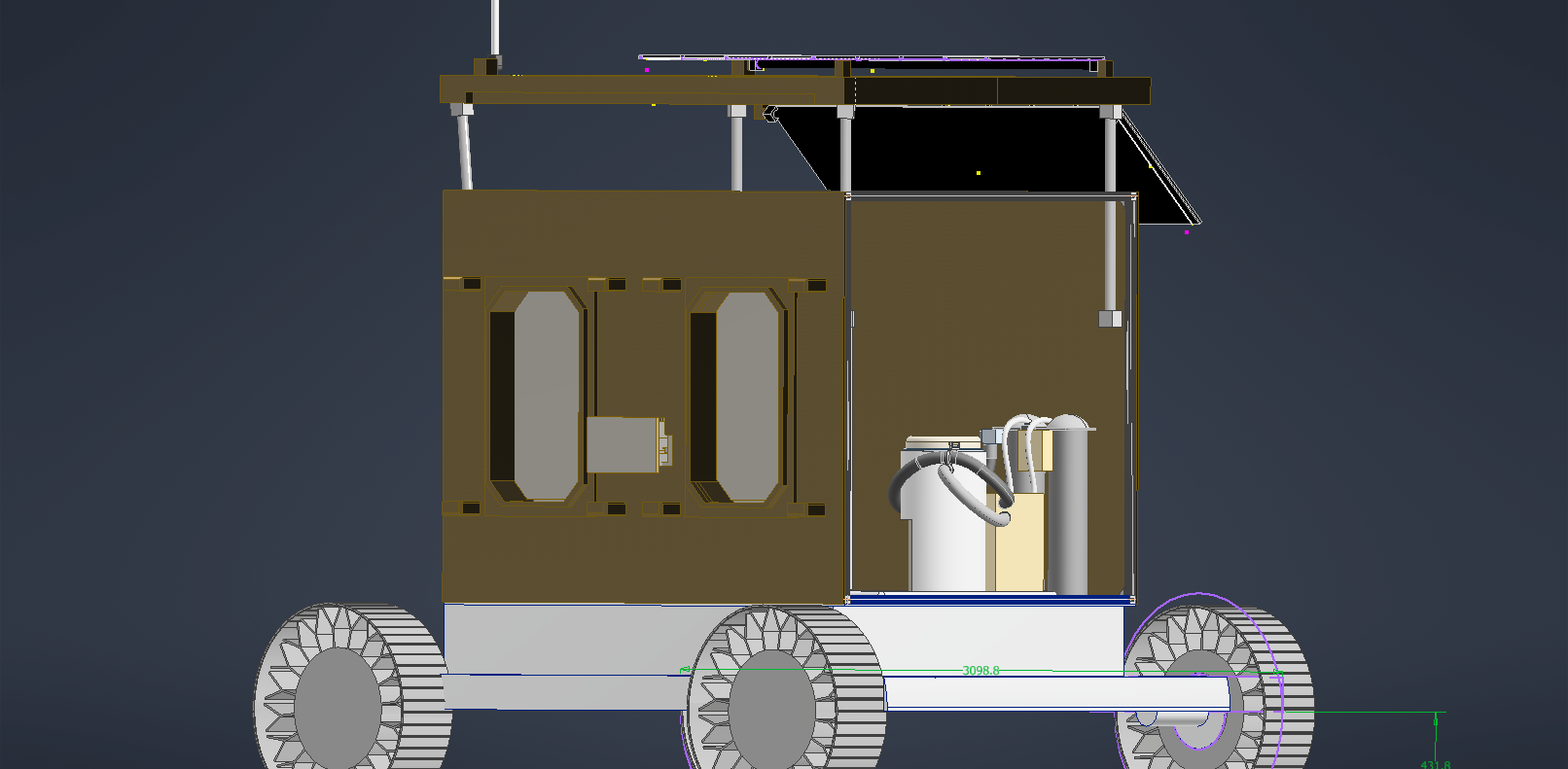From Sketches to Space-Ready Prototypes: What Teens Can Accomplish With the Right Challenge
What If High Schoolers Helped NASA?
When my students began the school year, most had never heard of a Preliminary Design Review. By the end, they had presented expandable lunar habitat prototypes to NASA engineers and learned the full engineering design process — hands-on.
This is how we tackled the NASA HUNCH Capstone Challenge, and how you can run a similar project in your classroom or STEM program.
🌕 The Mission Brief: Lunar Habitat for 7-Day Survival
Challenge: Design a lunar camper that expands from a 1.5m x 1.5m x 2m cube into a livable habitat for two astronauts.
Students had to consider:
- Micrometeorite protection and lunar regolith conditions
- Two beds, a table, a sample airlock, and EVA suit ports
- Power, water, and waste systems
- Inflatable vs mechanical expansion
- A timed two-minute final demo
Every step — from brainstorming to CAD models and physical builds — had to be documented and justified.
🛠️ Tools We Used in the Classroom
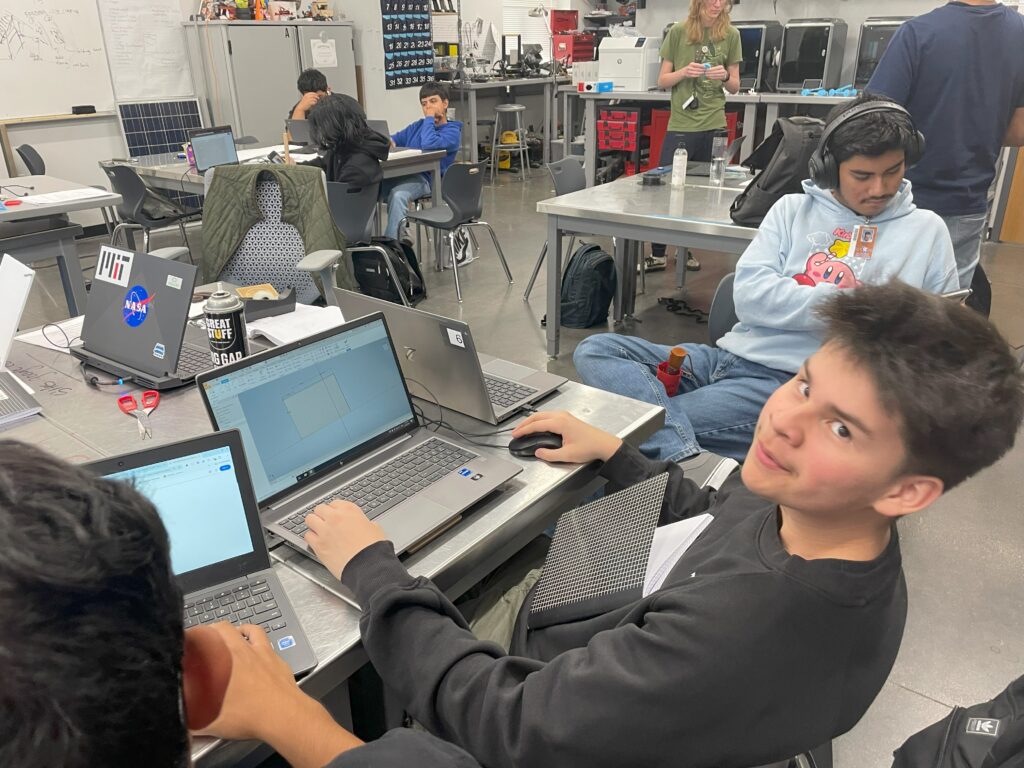
This was not just a sketchbook project. Students used real tools to bring their ideas to life, including:
- Autodesk Inventor – for 3D modeling
- Creality K1C 3D Printers – for scaled prototype parts
- Micro:bit and ESP32 microcontrollers – for fan and lighting control
- Clear plastic sheeting, PC fans, and tape – for inflatable tests
- Engineering notebooks , Google Docs, and Google Sites – for documentation, iteration, and presentation
Want to try this in your classroom?
📥 [Download our Lunar Camper Starter Pack (zip)] – includes lesson slides, design worksheets, and CAD templates.
👩🚀 Project-Based Teams With Real-World Roles
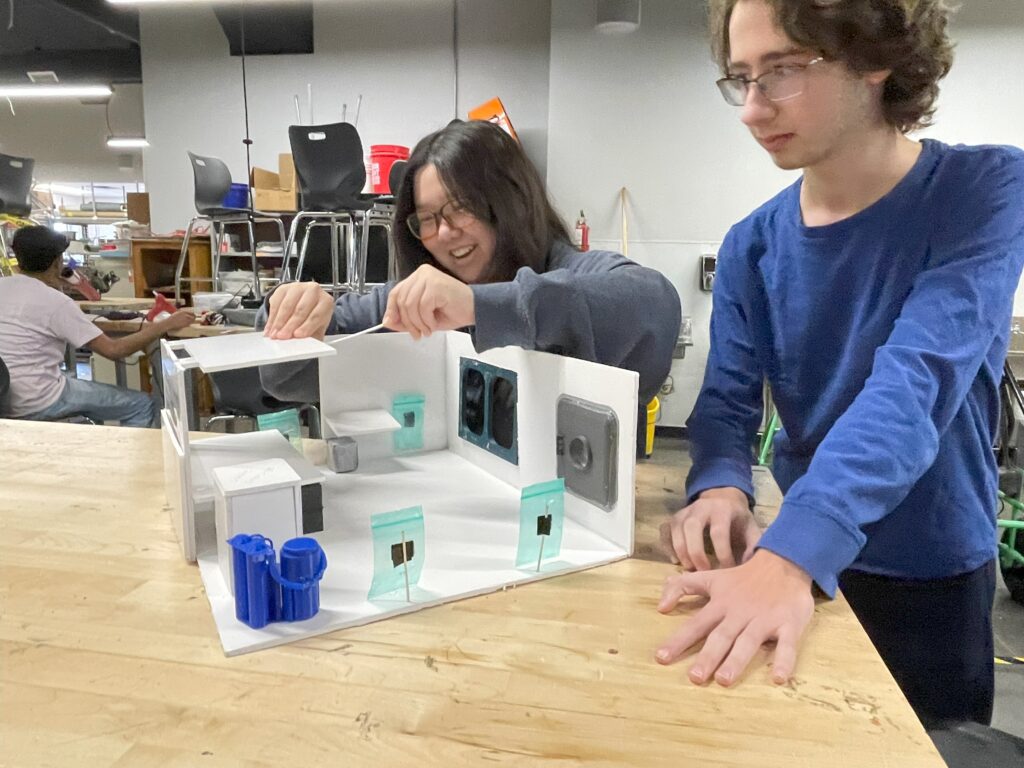
To simulate a real engineering firm, students took on the following roles:
- Project Manager – kept the team on schedule for PDR/CDR deadlines
- CAD Designer – created expandable 3D models
- Research Lead – ensured designs met NASA parameters
- Electrical Lead – handled fans, sensors, and power sources
- Communicator – led presentations and stakeholder reports
Students quickly realized that communication, iteration, and collaboration were as important as technical skills.
One Challenge, Many Solutions: Cross-Classroom Innovation
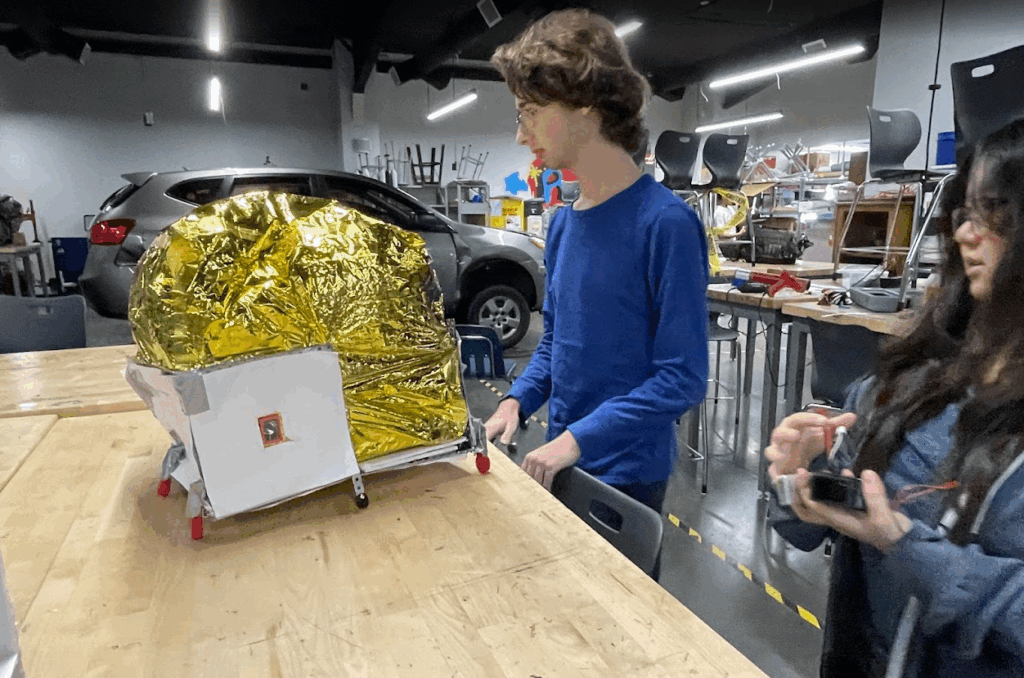
This wasn’t a one-class project. Student teams from multiple engineering classes — including Engineering Science, Engineering Design and Presentation I & II — all took on the Lunar Camper challenge.
Even though they shared the same mission brief, the resulting prototypes differed wildly.
Some teams focused on rigid exoskeleton structures, others on inflatable expansion using fan-driven systems. One team lead by a group of after school CAD students even designed a docking port for rover integration. Each solution reflected the unique strengths, interests, and collaborative dynamics of the team behind it.
The diversity of designs sparked meaningful comparison, critique, and innovation.
Not every team “succeeded” in building a polished final prototype — but every team walked away with deeper knowledge of engineering principles, systems thinking, and teamwork. That’s the heart of learning in project-based STEM education.
💬 What Students Said
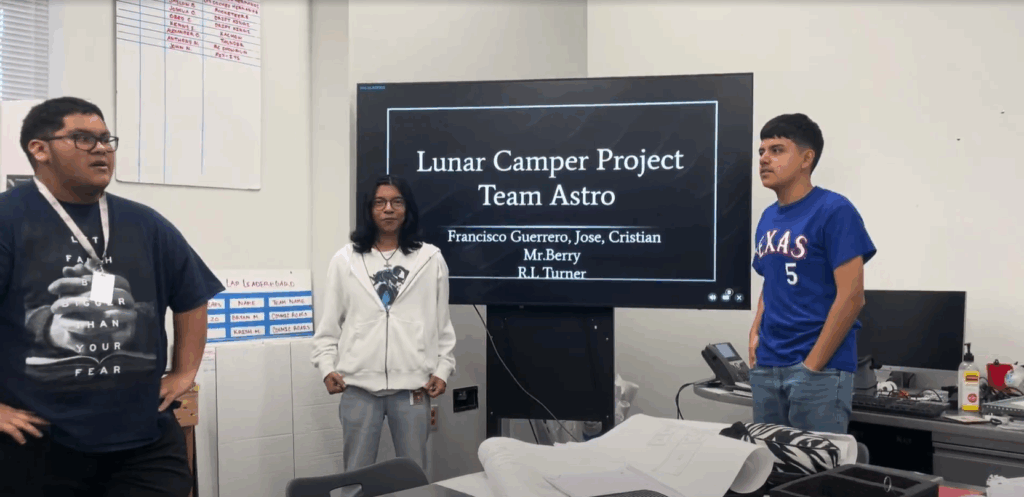
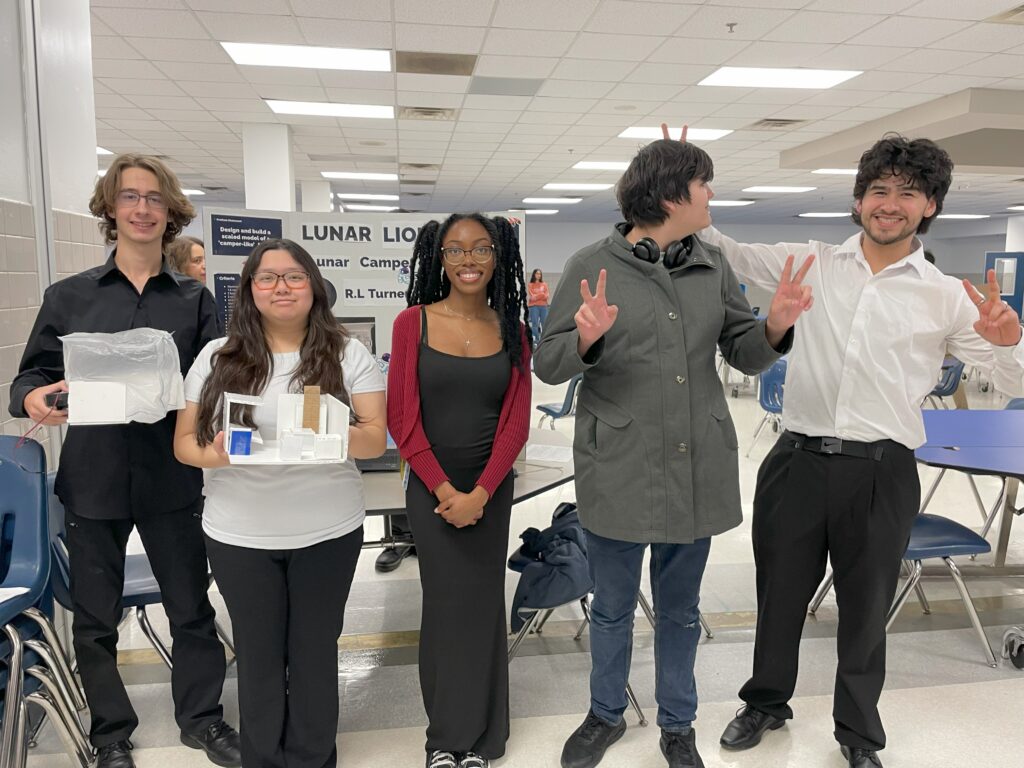
“I didn’t think we’d actually build something that could expand and contract like the ones NASA uses.”
— 11th Grade CAD Student
“Working on something that NASA might use someday — that was mind-blowing.”
— 12th Grade Project Manager
“I think I learned a lot on how to work as a team… and what tools you’ll need to survive in space.”
— Revit/Research Team Member
This challenge helped them learn to present technical ideas, organize their work, and recover from setbacks. That’s real engineering.
🧠 Engineering Concepts They Mastered
Students learned:
- The full Engineering Design Process from problem to prototype
- How to use CAD software to model and iterate designs
- How to conduct structured research on lunar constraints
- How to test hypotheses and document failures
- How to present to experts and revise based on feedback
And yes, they even learned to appreciate the value of a well-kept engineering notebook.
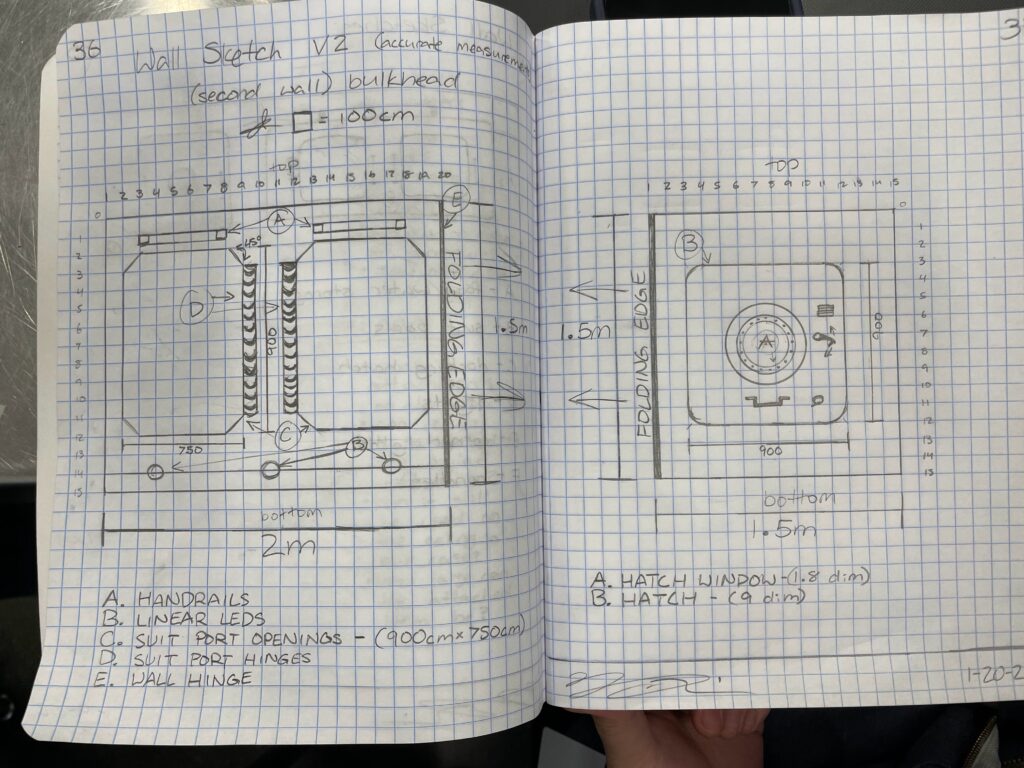
🧭 Want to Try This in Your Classroom?
Here are some tips to get started:
- Start with lunar conditions – Have students research heat, radiation, and gravity.
- Introduce the design process early – Use PDR, CDR, and FDR checkpoints.
- Make it hands-on – Even low-cost materials like fans and plastic wrap work!
- Focus on process over perfection – Grade documentation, not just the final build.
- Use team roles – This gives every student ownership and accountability.
Need help structuring your timeline? I’m happy to share mine.
